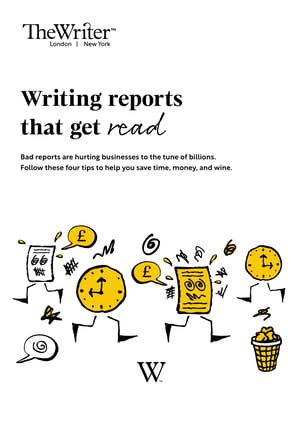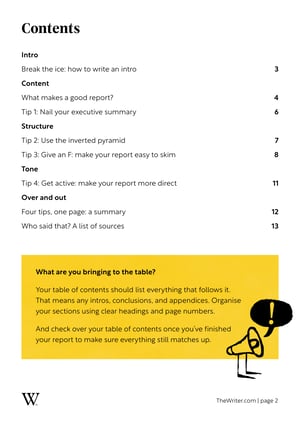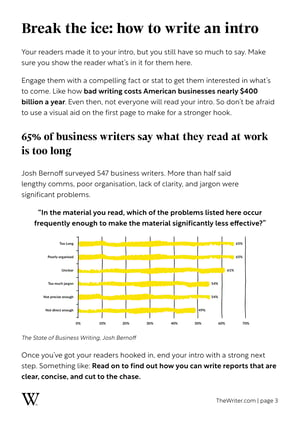pdf Download (505.47 kB)
Writing reports that get read



Writing (and reading) reports and whitepapers can feel pretty lengthy
Like a lingering chore you keep putting off. That’s why we’ve written a report on how to write reports – meta, we know. In it you’ll find top tips to make writing reports and whitepapers a walk in the park.
Here’s a teaser of what’s inside:
- Breaking down the beast
You’ve got pages and pages of tables, appendices and recommendations to set out. How do you break down all that content into a report structure that makes sense for your reader? Meet the inverted pyramid: your new best friend for ordering your report content.
- Writing a killer executive summary
Face the facts: many of your readers will only read your executive summary in detail, and gloss over the rest. So make that page count.
- Making your report less passive
Rip the mask off your unclear, indirect sentences and you’ll usually find the same pesky enemy lurking underneath: the passive voice. Find out why it’s a problem, and how to fix it.